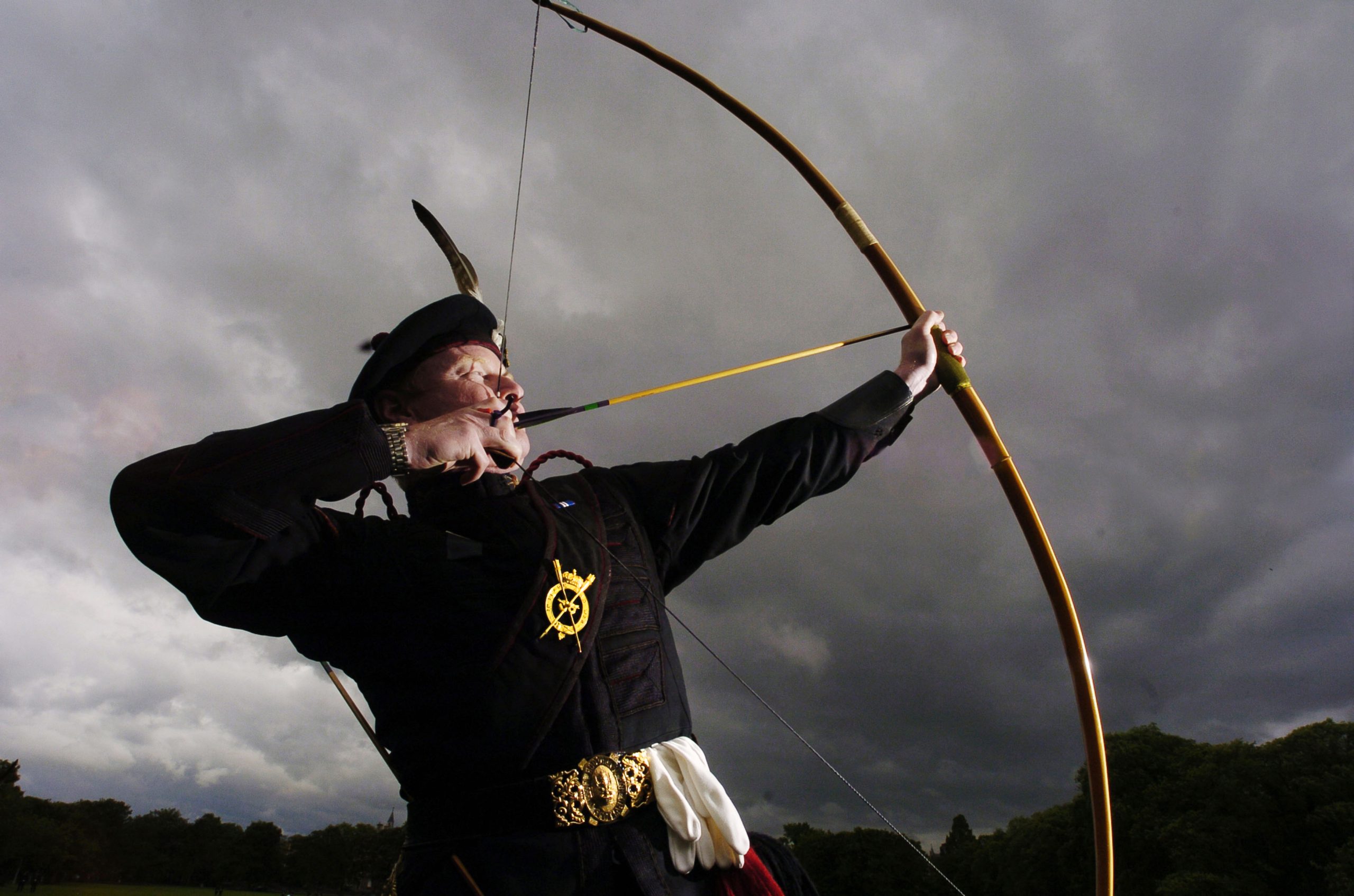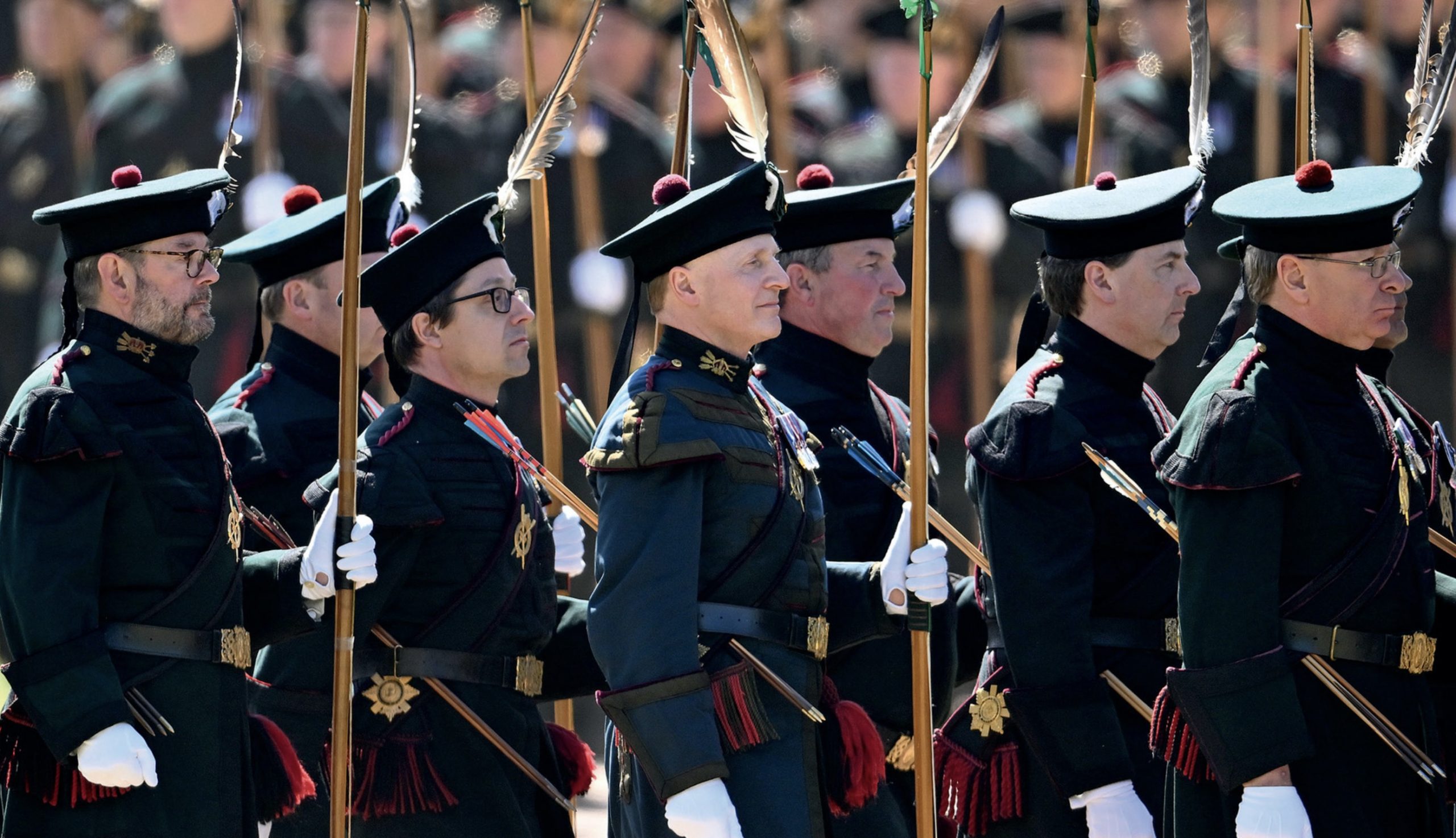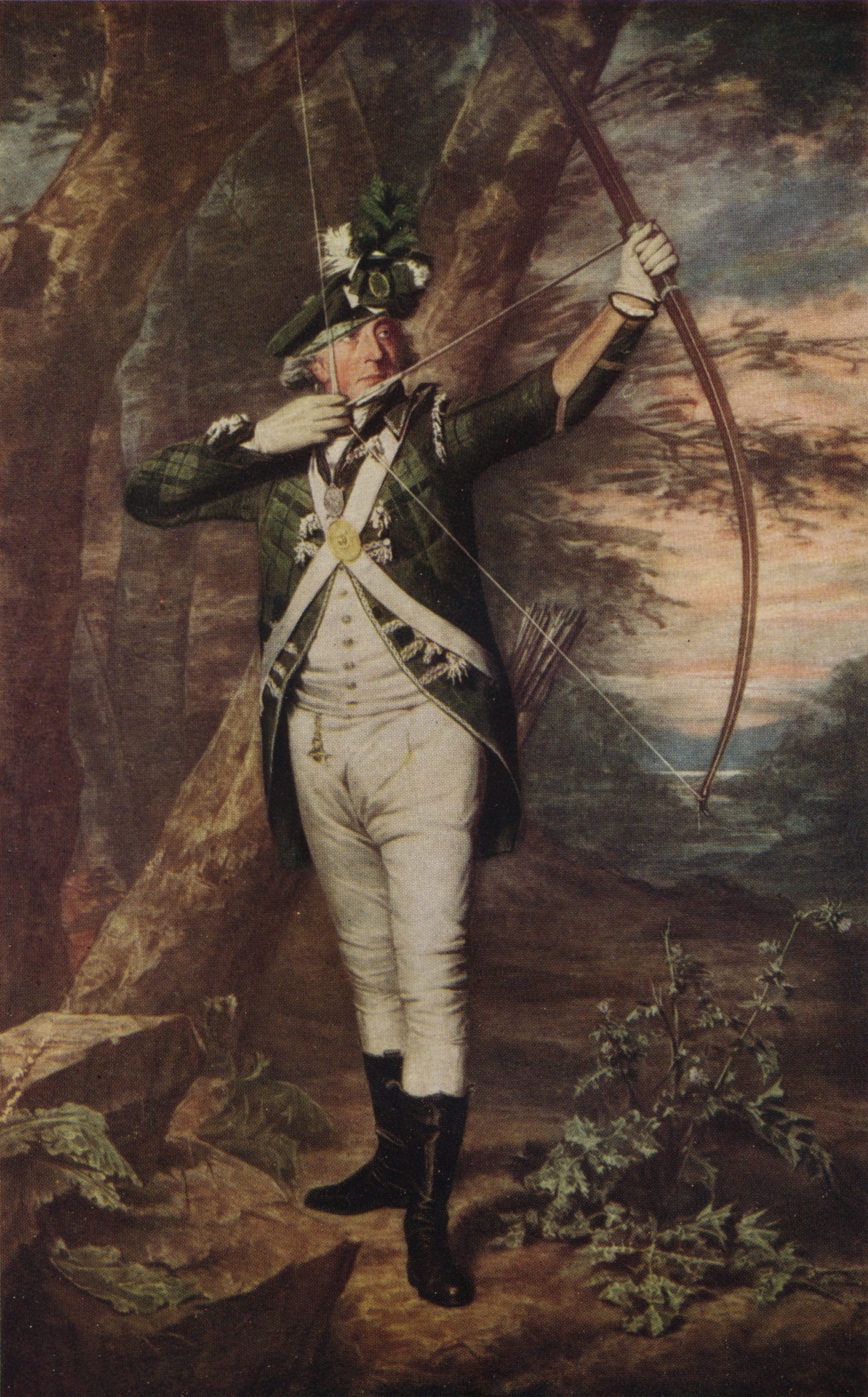The Royal Company of Archers: The tale of the The Queen’s Body Guard for Scotland
Sir Walter Scott’s legacy lives on as The Queen’s Body Guard for Scotland, The Royal Company of Archers, celebrates its bicentenary on a joyful royal occasion. Jamie Blackett brushes off his uniform.


‘Three cheers for Her Majesty the Queen. Hip hip…’ A great roar rent the air as 323 white gloves punched eagle-feathered bonnets into the air and three hurrahs bounced off the walls of the Palace of Holyrood and the next-door ruins of Holyrood Abbey across to the cliffs of Arthur’s Seat and back again. It was one of those supremely joyful moments that will stick in the memory, a visual and audible demonstration of the bond between a much-loved monarch and her loyal bodyguard.
This moment had been a long time in the making; serendipitously, The Queen’s 70 years on the throne coincided with 200 years of The Royal Company of Archers’ service as the Sovereign’s Body Guard for Scotland. The Almighty had ensured that the sun shone for the afternoon of June 30 during an otherwise wet and windy week in Edinburgh and Her Majesty, whose public appearances have become less frequent and all the more treasured, was able to be present and was visibly touched by the parade and the presentation of a Reddendo by the Captain-General, the Duke of Buccleuch and Queensberry.
The parade was the culmination of Royal Week, the annual migration of the Court to Edinburgh, where the Royal Family performs its official duties in Scotland, notably an investiture, a garden party and the installation of new Knights of the Most Ancient Order of the Thistle in St Giles’s Cathedral.

The Royal Company of Archers is an entirely voluntary unit. For Archers, many of them now backwoodsmen with military service in their distant pasts, it is time to forget about silage making and sheep shearing, have a haircut, polish boots and medals and head for Edinburgh to be reintroduced to the esoteric mysteries of bow drill under the tender care of The Royal Company’s Toxophily Sergeant Major and a team of Scots Guards drill sergeants before the public appearance. (‘Lift your chin sir, please. That’s it, now the other one.’)
This is a challenge that exercises rarely stimulated parts of the brain for those with the conventional movements literally drilled into them in school CCFs or at Sandhurst, as holding a bow in the left hand and standing at ease with feet together with the right foot behind and at 45˚ to the left are the exact opposite of holding a sword or rifle in the right hand and standing at ease with feet apart.
Echoing all great British institutions, The Royal Company’s origins as The Queen’s Body Guard for Scotland are stranger than fiction, no accident as they owe much to the kaleidoscopic imagination of the great novelist Sir Walter Scott. In August 1822, the recently crowned George IV made his visit to Scotland, the first by a British monarch since Charles II’s brief and ultimately abortive restoration in Scotland in 1651. Scott, who had met the King when he was still Prince Regent several years before, was the organiser for the visit and took the opportunity to become impresario of a series of splendid pageants, one of which coincided with the King’s 60th birthday.
He indulged his theatrical imagination to the full. Many aspects of Scottish culture today can be traced back to that momentous month. Tartan became the national dress of Scotland in a way it never had been before. Edinburgh’s global reputation as a festival city, with its lively Arts festivals and Royal Military Tattoo, probably owes something to the benchmark set by Scott that August.
Sign up for the Country Life Newsletter
Exquisite houses, the beauty of Nature, and how to get the most from your life, straight to your inbox.
It is not known whether Scott, who was himself an Archer, influenced the decision, but the Council of The Royal Company petitioned the King to be accepted as his personal bodyguard for the visit. The offer was accepted and The Royal Company of Archers paraded and has guarded the monarch during official engagements in Scotland ever since.

The origins of The Royal Company go back to the formation, by order of the Privy Council, of The King’s Company of Archers in 1676, to encourage the ‘noble and useful recreation of archery’. This formalised the ‘shooting’ being carried out around Edinburgh by ‘noblemen and gentlemen’ who had been competing for the Musselburgh Arrow, said to be the world’s oldest sporting trophy, since at least 1603, when the first winner’s medallion was struck.
Archery, specifically longbow shooting, remains at the core of The Royal Company’s activities. Archers shoot in the grounds of Holyrood and in the indoor butts at Archers’ Hall, the imposing Georgian clubhouse on Buccleuch Street, Edinburgh’s equivalent of a London livery hall. Competitions are held around Scotland and there is a triennial match against the Woodmen of Arden, the society of English toxophilites founded in 1758 — the longbow equivalent of the Calcutta Cup. Each Archer fires two arrows carrying his colours at a ‘clout’, a straw-filled target at 180 yards. Arrows are sometimes loosed off simultaneously so that a competition resembles a medieval battle.
The Royal Company also has a charitable arm, a trust that awards donations and grants to benefit the Arts, heritage and sport, especially for the disabled, including those who have served in the Armed Services.
Members of The Royal Company must provide their own uniforms, many of them family heirlooms, which occasions extreme anxiety about moth damage and waistlines. Dress consist of a green frock coat and green trousers laced with black mohair and red velvet, a cross belt and sword. The headdress is a traditional Highland chieftain’s bonnet with an eagle’s feather. Behind the feather is a white silk cockade, the badge of the Jacobite armies in 1715 and 1745, the only item on any British military uniform that commemorates that heritage. The Jacobite sympathies of a number of Archers in the 18th century may also account for The Royal Company’s unique tradition of demonstrating good faith by saluting with both hands: one with sword or bow and the other with the palm of the hand raised to the right of the forehead.
The presentation of the Reddendo, a Latin word used in Scots Law meaning ‘by giving in return’, dates back to 1704, when Queen Anne granted the Charter that forms the Laws of The Royal Company today. In return for certain privileges, The Royal Company could be called upon to render to Her Majesty and her successors, a ‘pair’ of barbed arrows (actually, three arrows), resting on an embroidered green velvet cushion.
The Reddendo is presented with the traditional words spoken by the Captain-General: ‘According to our ancient Charter, I present to Your Majesty the Reddendo, craving that Your Majesty will be graciously pleased to continue Your royal countenance and recognition of all the ancient rights and privileges of The Royal Company of Archers, Your Majesty’s Body Guard for Scotland.’
There were reports of the cheering being audible more than a mile away, so perhaps Scott’s statue, sitting beneath its monument in Princes Street Gardens, heard them and smiled, happy in the knowledge that the tradition he did so much to enhance lives on.
-
 Two quick and easy seasonal asparagus recipes to try this Easter Weekend
Two quick and easy seasonal asparagus recipes to try this Easter WeekendAsparagus has royal roots — it was once a favourite of Madame de Pompadour.
By Melanie Johnson
-
 Sip tea and laugh at your neighbours in this seaside Norfolk home with a watchtower
Sip tea and laugh at your neighbours in this seaside Norfolk home with a watchtowerOn Cliff Hill in Gorleston, one home is taller than all the others. It could be yours.
By James Fisher